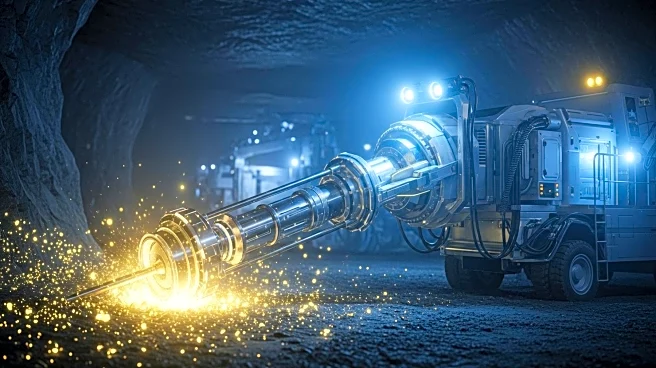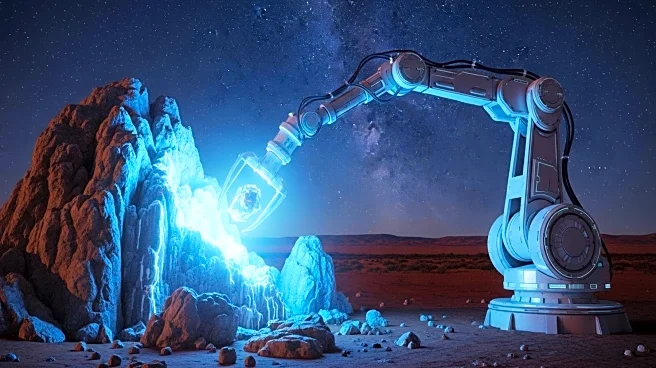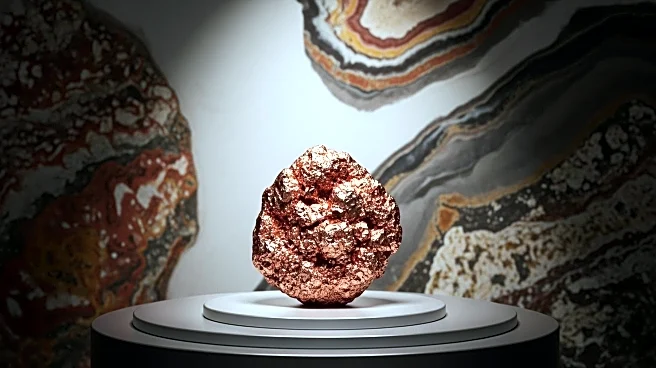What's Happening?
The mining exploration industry is facing significant challenges as the era of easily accessible ore deposits comes to an end. Historically, discoveries were made by identifying visible mineral outcrops, but now, most potential deposits are concealed beneath layers of soil and sediment. This shift has led to increased exploration costs and reduced discovery rates. According to Geoscience Australia, mineral exploration expenditure fell by 7% year-on-year, with only 45 new resources announced despite extensive drilling efforts. The industry is now focusing on deep geophysics and advanced technologies to uncover hidden mineral systems.
Why It's Important?
The decline in easy discoveries has profound implications for the mining industry and global metal supply chains. As traditional exploration methods become less effective, companies must invest in new technologies and strategies to locate hidden deposits. This transition could lead to increased costs and risks, impacting profitability and investment attractiveness. Additionally, the reliance on advanced geophysical techniques and data analytics may drive innovation and collaboration between geoscientists and data scientists, reshaping the industry's approach to exploration.
What's Next?
The industry is likely to see a shift towards more systematic, science-led exploration initiatives, supported by government policies and incentives. Programs like Australia's UNCOVER initiative aim to promote deeper exploration efforts, potentially leading to new discoveries and revitalizing the sector. Companies that successfully adapt to these changes and invest in cutting-edge technologies may gain a competitive edge, while those that fail to innovate could face declining prospects.
Beyond the Headlines
The move towards deeper exploration raises ethical and environmental considerations, as accessing concealed deposits may involve more invasive techniques and impact local ecosystems. The industry must balance the pursuit of new resources with sustainable practices and community engagement. Furthermore, the focus on hidden deposits may lead to geopolitical shifts, as countries with unexplored mineral potential become targets for international investment and development.










